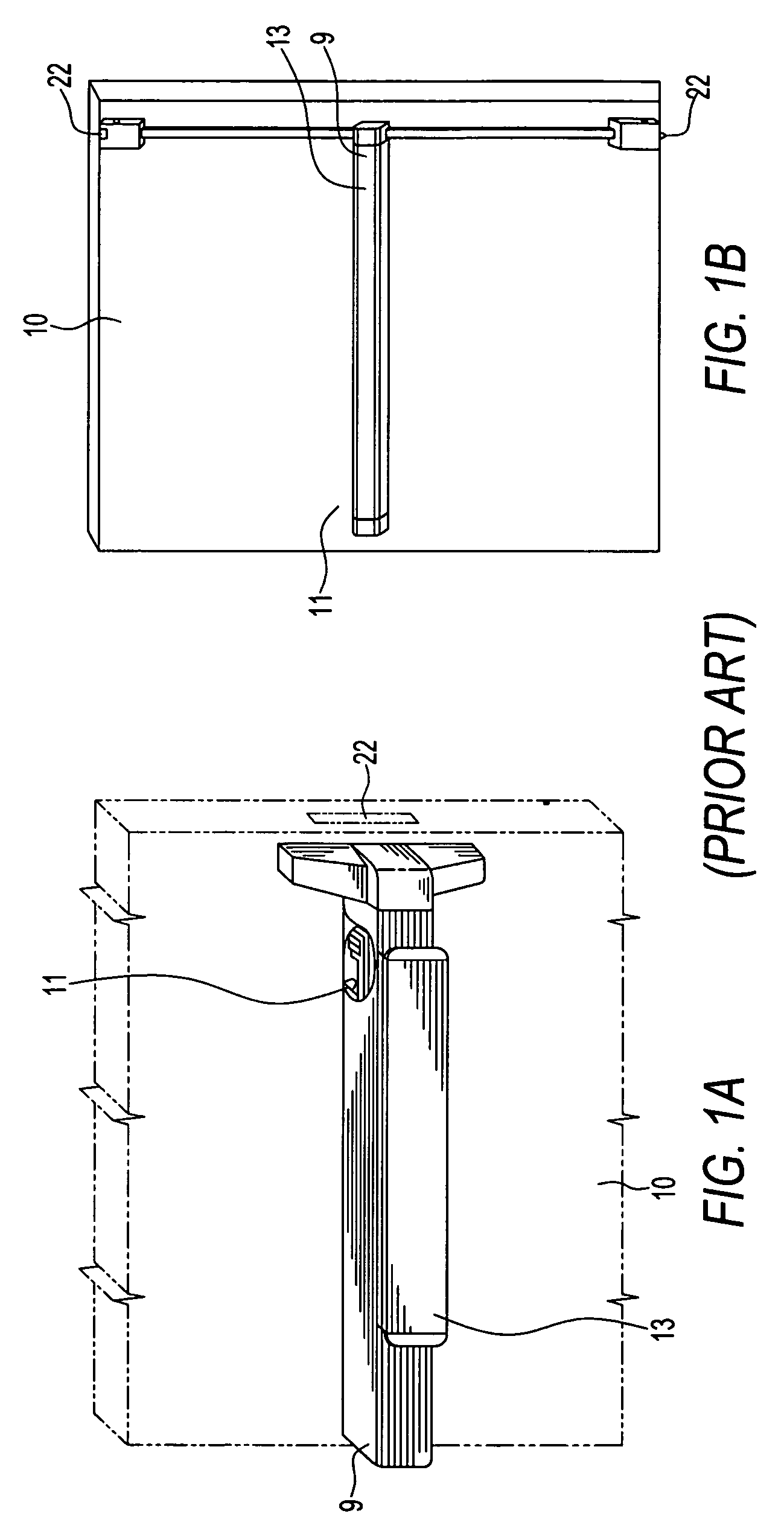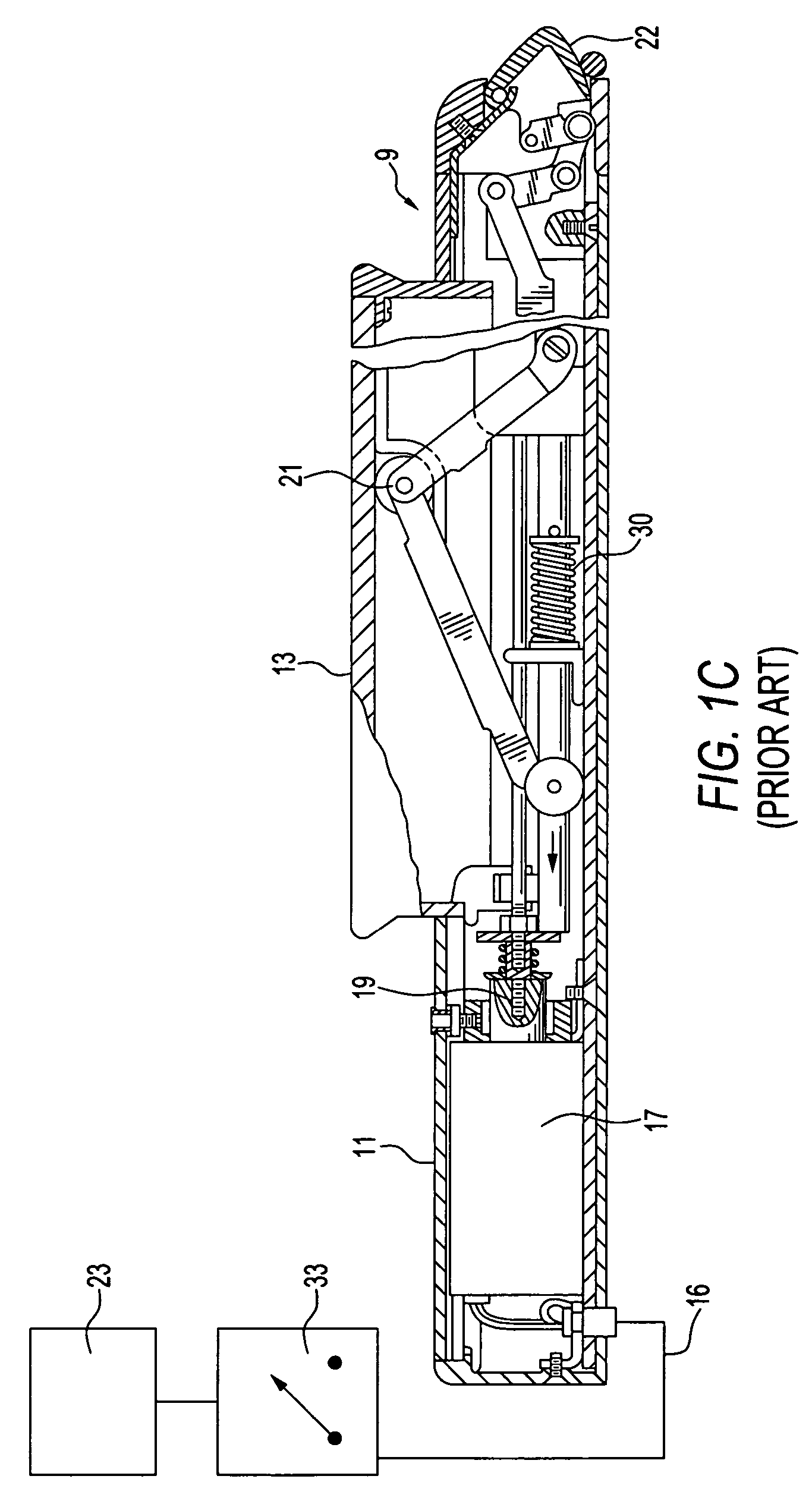Electromechanical door solenoid current surge booster circuit
a technology of current surge booster and door solenoid, which is applied in the direction of magnets, mechanical devices, magnetic bodies, etc., can solve the problems of inconvenient installation of heavy gauge wiring to carry current between the power supply and the door solenoid, affecting the operation of the door solenoid, and requiring a substantial momentary current load. to achieve the effect of reducing the current capacity
- Summary
- Abstract
- Description
- Claims
- Application Information
AI Technical Summary
Benefits of technology
Problems solved by technology
Method used
Image
Examples
Embodiment Construction
[0032]The following detailed description, and the figures to which it refers, are provided for the purpose of describing example(s) and specific embodiment(s) of the invention only and are not intended to exhaustively describe all possible examples and embodiments of the invention.
[0033]Referring now to FIGS. 1A, 1B and 1C front and schematic views are shown of the general attributes of typical latching devices of the prior art with which the present invention may be used. FIG. 1A is a view of a mortise type latching mechanism actuated by a touch plate that is mounted on a portion of a door; FIG. 1B is a view of a vertical rod type of latching mechanism. FIG. 1C is a side schematic view of a rim type latching mechanism. These different types of door latching mechanisms are presented by way of example to display the variety of latching mechanisms used and not so as to limit the scope of the invention. The present invention may be used with other electromechanical door latching config...
PUM
 Login to View More
Login to View More Abstract
Description
Claims
Application Information
 Login to View More
Login to View More - R&D
- Intellectual Property
- Life Sciences
- Materials
- Tech Scout
- Unparalleled Data Quality
- Higher Quality Content
- 60% Fewer Hallucinations
Browse by: Latest US Patents, China's latest patents, Technical Efficacy Thesaurus, Application Domain, Technology Topic, Popular Technical Reports.
© 2025 PatSnap. All rights reserved.Legal|Privacy policy|Modern Slavery Act Transparency Statement|Sitemap|About US| Contact US: help@patsnap.com



